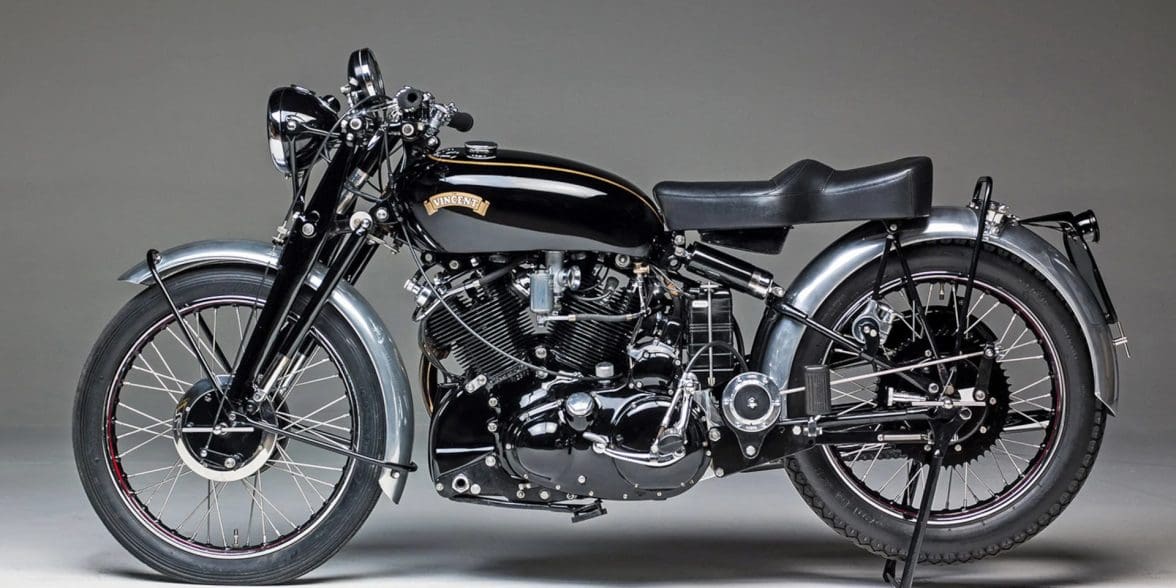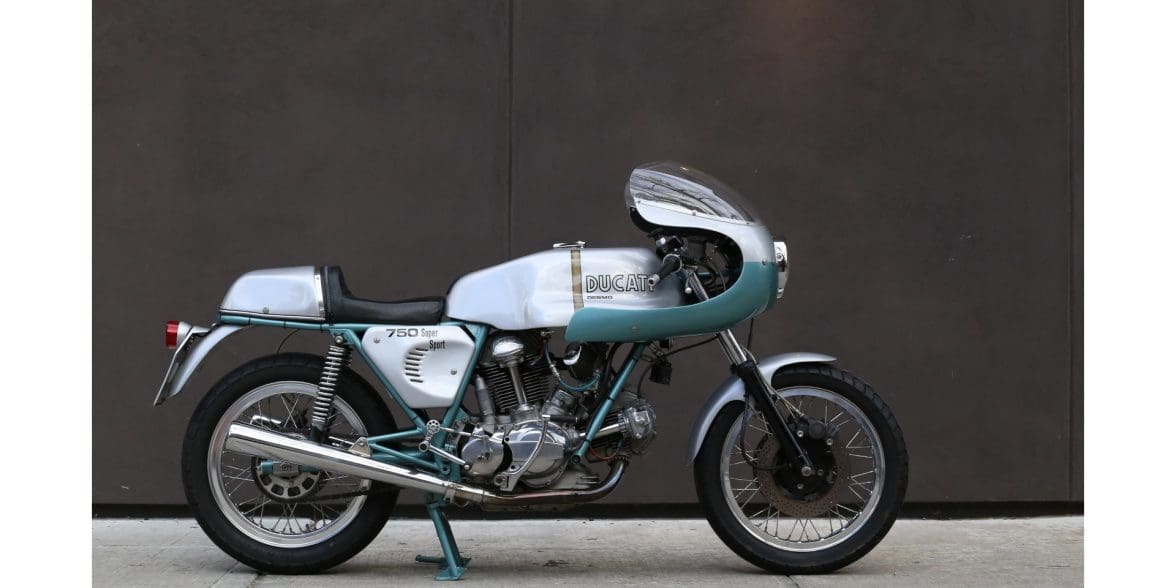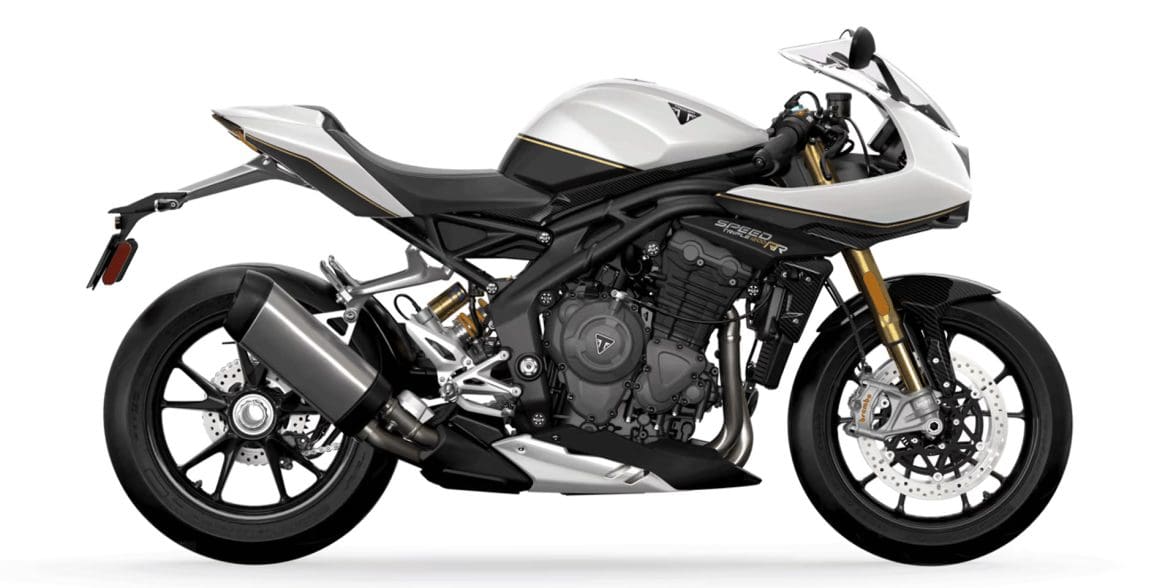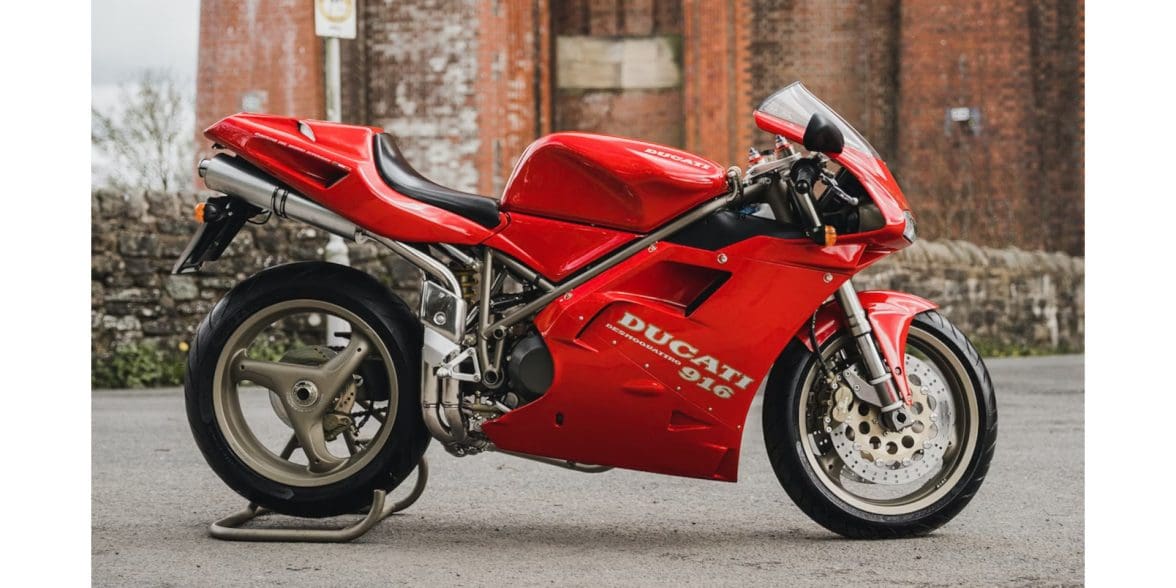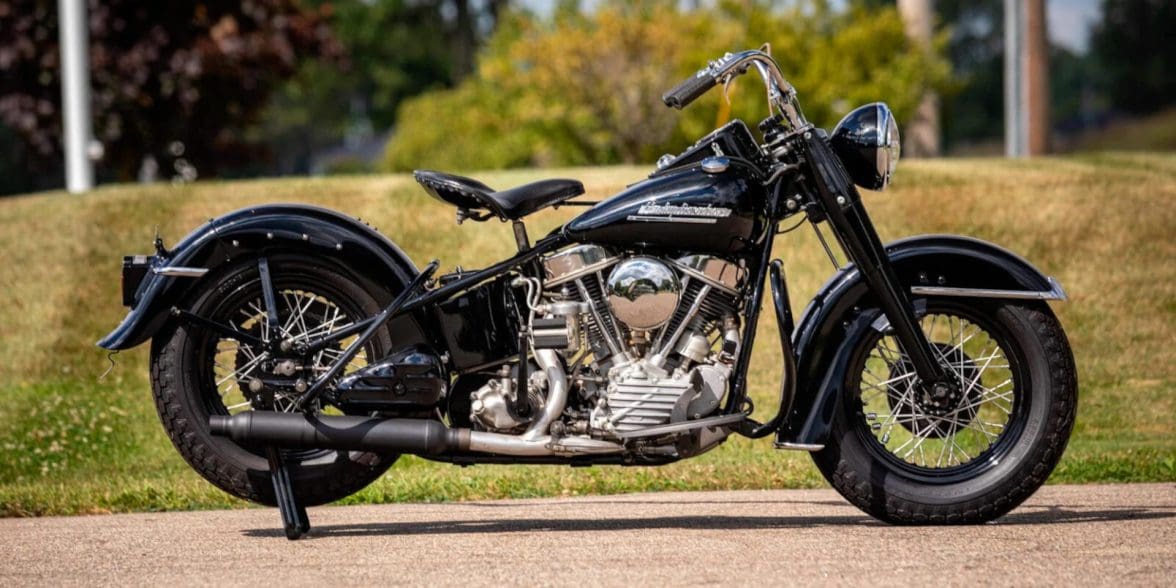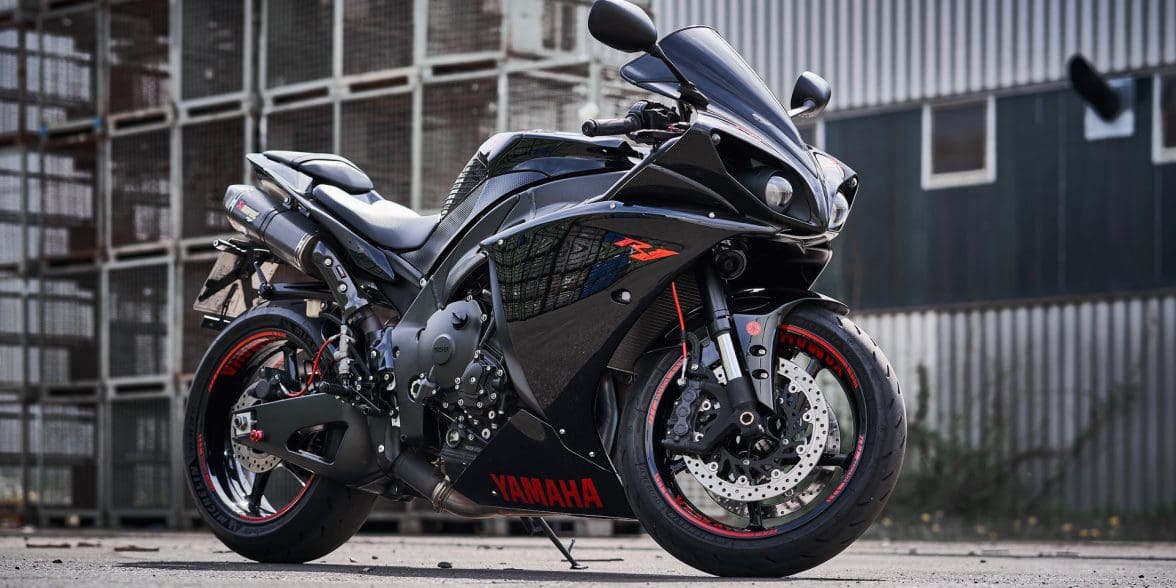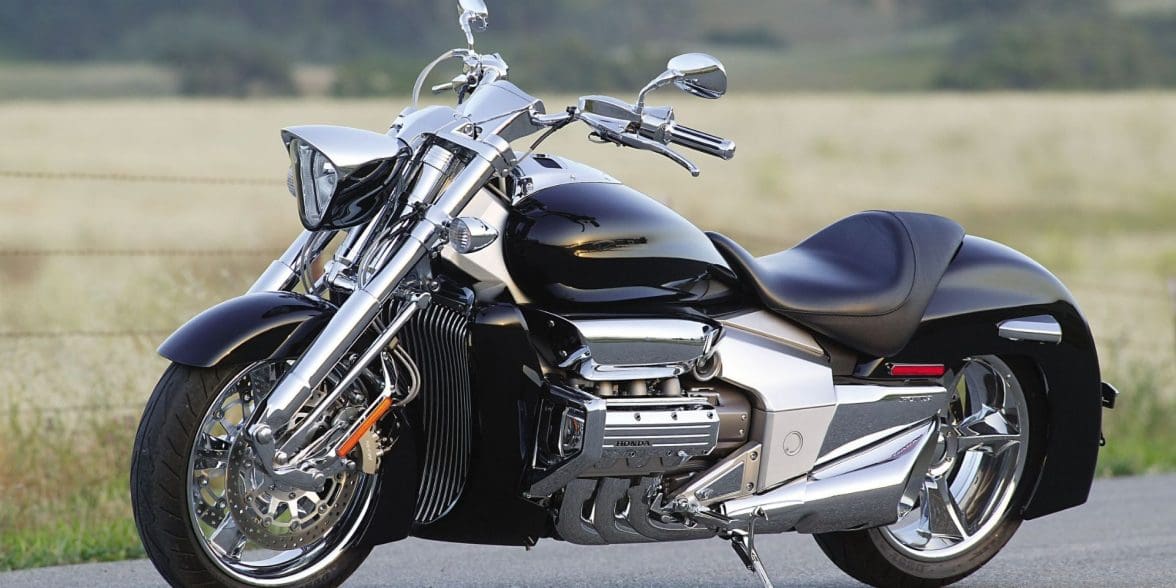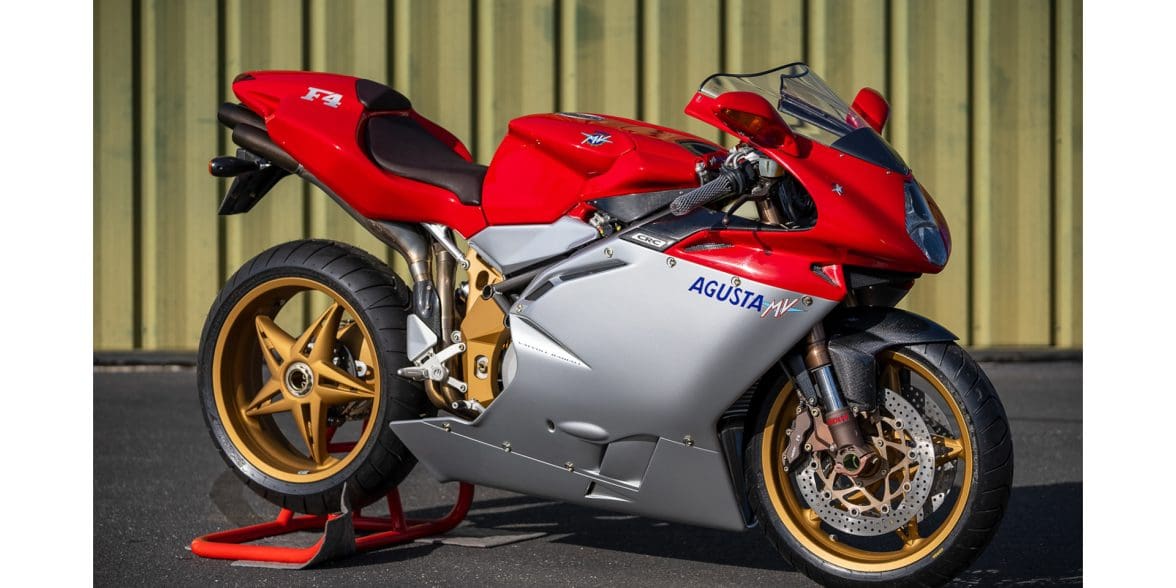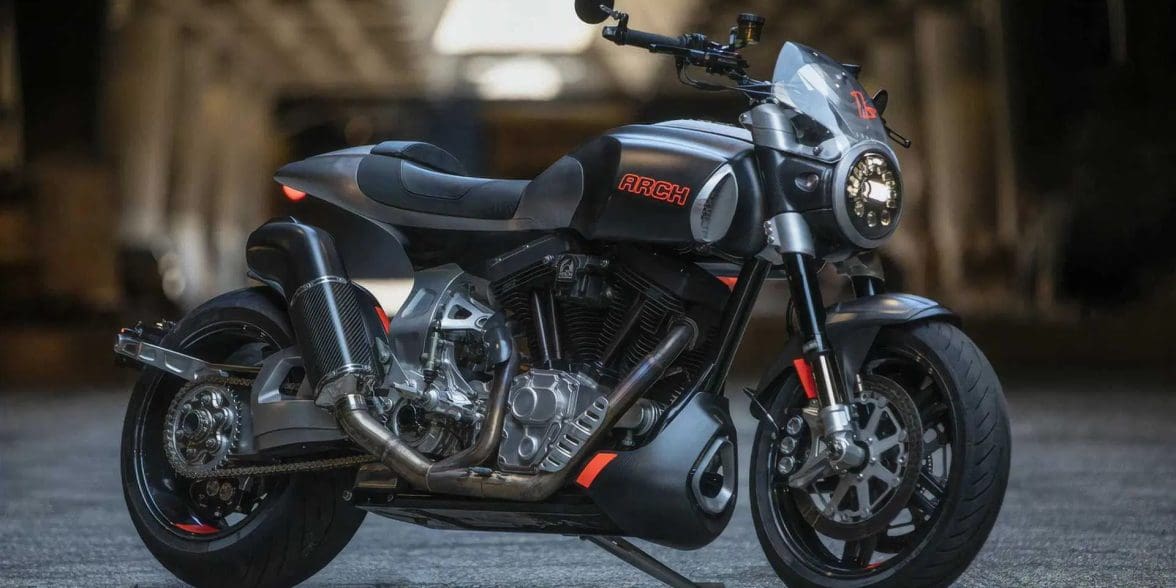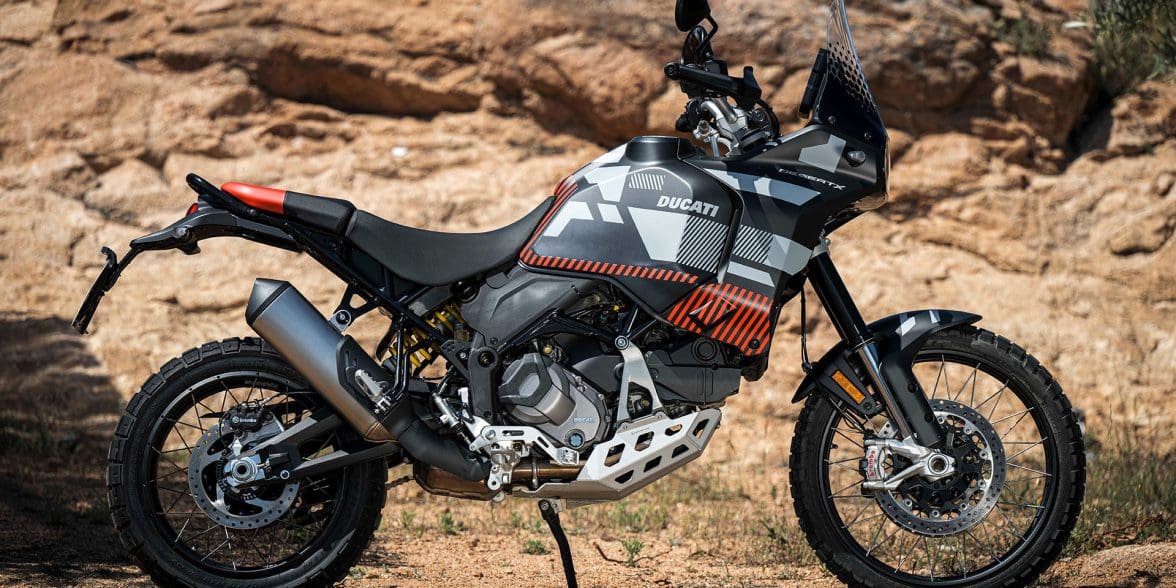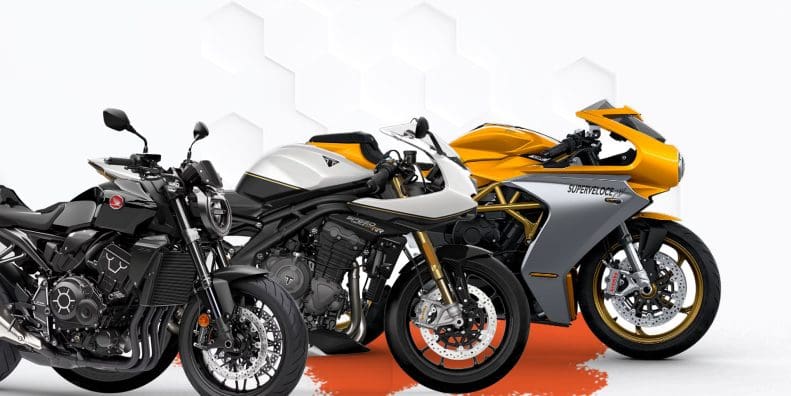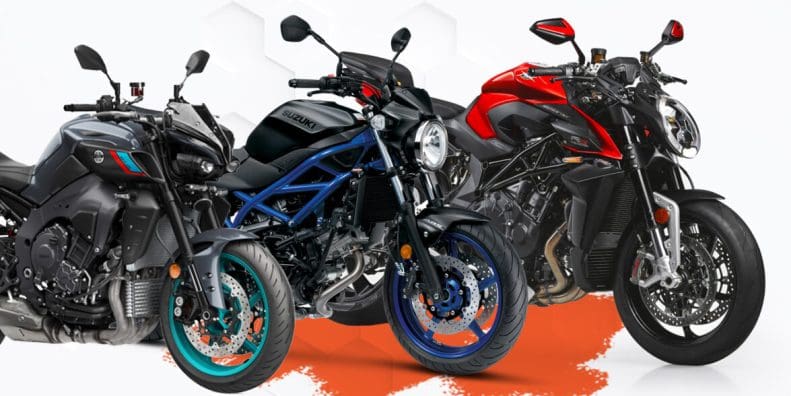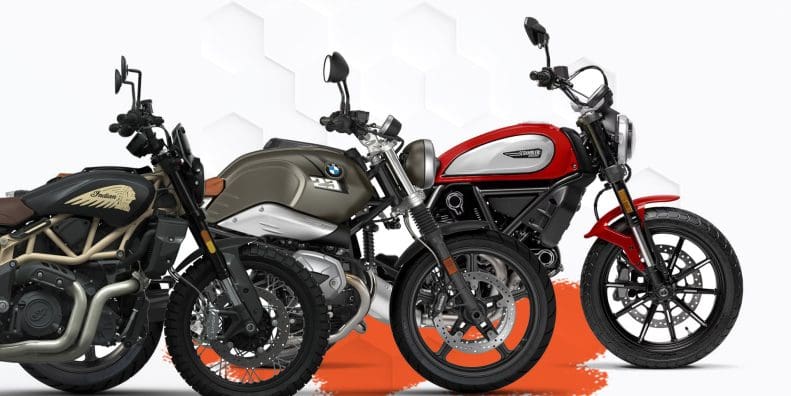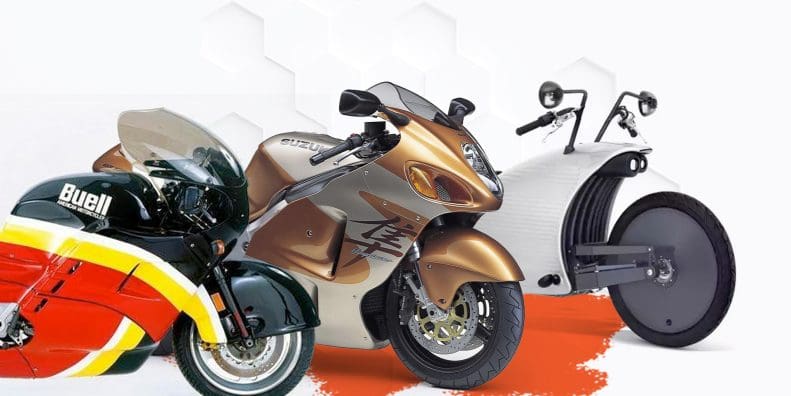The Best Looking Motorcycles Ever Made [2024 Edition]
Updated September 6, 2023 by Simon Bertram
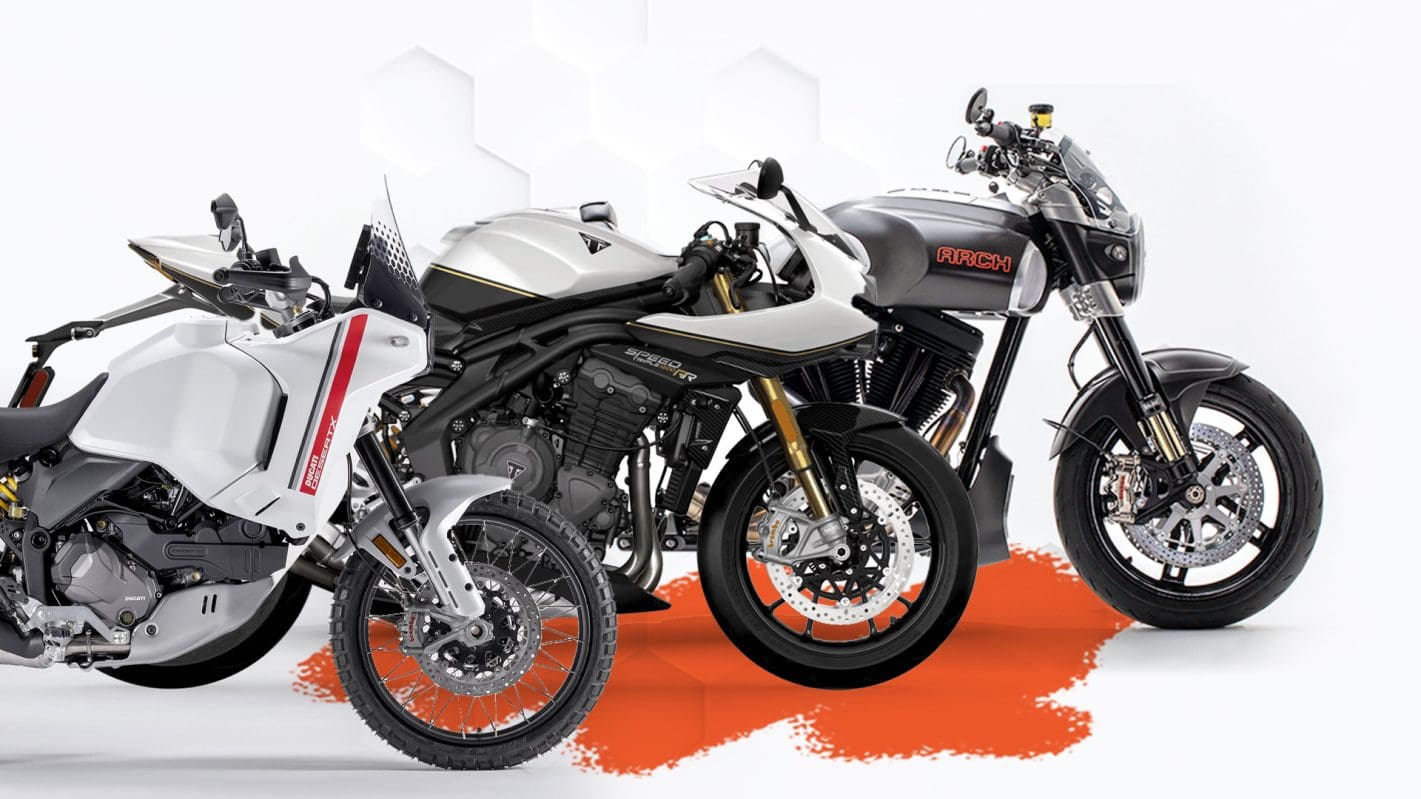
Beauty Is Subjective, But Almost Everyone Agrees On These Bikes
Article Quick Nav
These are the most beautiful motorcycles ever made:
Let's just get the biggest thing about a list like this out of the way first: These bikes are what we, collectively as content creators and contributors to webBikeWorld, have chosen as the most beautiful bikes ever made. This is a highly subjective topic, for as the saying goes, "Beauty is in the eye of the beholder." There are some bikes on here that even we didn't fully agree on between ourselves, but that majority did like.
See also: The Ugliest Motorcycles Ever Made
Our choices will likely not reflect yours, but we will present our reasoning for each choice as well as give a short bit of context and history regarding each motorcycle chosen. It is with these little bits of information that we hope you can at the very least understand why we chose the bikes we did.
We are a very diverse group here at wBW. We have the supersport and superbike crowd, the sport touring and adventure touring crowd, a couple of us are dead set on cruisers as the greatest bikes ever made, and we even have one of the most fervent ADV enthusiasts in the world as part of our staff. So with that out of the way, these are the 10 bikes that we think are the most beautiful ever made... at least up to 2023!
About Our Selections
The only criteria for this list was that the motorcycle is just that, a motorcycle. If it has two wheels, and engine, a seat, handlebars, and is street legal, it was considered. It should also be noted that this list is "From the factory," aka stock, so no custom bikes, one-offs, and the like will be present. Limited editions, special editions, and the like were included.
1949 Vincent Black Shadow
When it was released, it was, quite simply, the fastest production motorcycle in the world, and damn did it look good
Why We Picked It:
Vincent Motorcycles was founded in 1928 by Philip Vincent when he bought out HRD Motors, who had all the production facilities and employees to built his vision of the perfect motorcycle. Vincent was a mechanical genius, and is the one that created cantilever rear suspension that many cruisers use in modern times, and he was able to find ways to make bikes lighter, more efficient, and most importantly, faster.
After several models that raised the top speed with each release, from the Meteor and Comet to the post-War Series B Rapide that could reach 110 MPH, Vincent was still not satisfied until he could outright claim he had the fastest production motorcycle in Britain. As such, with his best designers and engineers, they began work on what would eventually become the 1949 Vincent Black Shadow.
Powered by a 998cc air-cooled V-twin with 55 HP, it was able to reach 125 MPH, and firmly put Vincent Motorcycles on the map as makers of the first "superbike" in British history. It also just happened to be absolutely, achingly, jaw-droppingly beautiful.
The seat pushed all the way to almost over the rear wheel, the long, sleek, low tank over the big V-twin thumping away. One of the first iterations of what we now call sport-standard bars, instead of being swept back towards the rider. The unbelievably raked front suspension. Those chromed exhaust pipes.
Of course, there is also the fact that with the name Black Shadow, each and every one of them were painted a deep, dark black that made the thing look menacing. The Black Shadow was in production from 1948 (as the 1949 MY bike) to 1955, and was the last motorcycle that Vincent made before the company went bankrupt and dissolved.
Specifications:
Price: Unknown
Engine: 998cc V-twin
Power: 55 HP
Torque: Unknown
Transmission: 4 Speed Manual
Curb Weight: ~500 lbs
Strengths:
The fastest production motorcycle from Britain in the first half of the 20th century, and it kept that record for a fair few years
Highly desired by motorcycle collectors for its near-perfect aesthetics of an early superbike, its famous top speed, and its rarity.
Black Shadows in mint condition have auctioned between $400,000 and $1 million in recent years, and is considered by many to be a "unicorn" bike, the one bike that would be the crown jewel of their classic bike collections
Learn More:
1974 Ducati 750 Super Sport
Ducati has a history of making road-going versions of their race bikes. This was one of the first, and one of the best looking
Why We Picked It:
Founded in 1926, Ducati was originally a manufacturer of electronics components for radios. It was only after World War II, in conjunction with a small manufacturer of engines called SIATA, that they started to make motorized bicycles. These original engines were known as Cucciolo, which is Italian for "puppy," because of the distinctive bark that they made. After selling 200,000 bicycles with SIATA's engine, Ducati started to make their own version in 1950, as their first motorcycle.
Fast forward to the 1970s, and in 1972, the 750 Imola Desmo, a small series of racing bikes, placed first and second at the Imola 200 endurance race. To celebrate the victory, it was decided that a limited series of road legal race bikes would be made.
The first series, in 1973, was the yellow colored 750 Sport, which was in itself quite a beautiful bike. However, the "green frame" 750 Super Sport in 1974 surpassed it. It had a full race fairing. It had a scalloped 20 liter fuel tank with a zipper panel to show fuel level. It had Marzocchi front forks and 18 inch wheels. It was, literally, the 750 Imola Desmo, just with a place to put a license plate.
It was raw, uncompromising, extremely firm and had absolutely no padding on the seat. It was powered by a 748cc L-twin which provided 70 HP and 52.8 lbs-ft of torque, and because it weighed next to nothing at just over 400 lbs wet, it was extremely agile and would accelerate hard. Only 401 were ever made, and in 2023, will fetch anywhere from $150,000 to $400,000 depending on condition.
Specifications:
Price: $3,200 ($19,842 in 2023)
Engine: 748cc L-twin
Power: 70 HP
Torque: 52.8 lbs-ft
Transmission: 5 Speed Manual
Curb Weight: 406 lbs
Strengths:
One of the most desirable and collectible Ducati's of all time. Rarely trades hands, so when one comes up for auction, will usually result in a bidding war depending on condition. A fully mind condition model with a low VIN/serial number can fetch upwards of $400,000
Agreed upon by many Ducatista to be one of the most beautiful bikes to come out of Italy, not just from the 1970s, but full stop.
Quite literally a race bike with a place to put a license plate, they are uncompromising, raw, extremely stiff, and not at all comfortable.
Only 401 units made.
Learn More:
2023 Triumph Speed Triple 1200 RR
Perhaps the best looking Triumph in a generation, and definitely one of the best looking cafe racers ever
Why We Picked It:
Triumph has had many motorcycles throughout the years that could easily be considered some of the most beautiful ever made. There have been many Bonneville models that could have been on this list, and the Daytona sport bikes were also seriously considered. However, the only bike that we all as a group could agree on, to a person, was the current 2023 Speed Triple 1200 RR.
It is the very definition of a modern cafe racers, if the rock and roll revolution had happened in 2023 instead of 1963. It is long, low, with the rider reaching way forward for the low clip-on bars and tucked in over the fuel tank. It screams speed and power even standing still, looking like it's going at warp speed before the engine with its almost trademark Triumph triple burble through the exhaust is kicked over.
That triple, a 1,160cc unit with 178 HP and 92 lbs-ft of torque, is, if you'll pardon the pun, a triumph. It is smooth, has an exponential power curve that will have it catapulting down the road as the revs climb over 9,000, and loves your right wrist being wide open. It is also a light and agile bike, at home on the street but ready to rock on any track, where its sheer beauty will leave other riders stunned as it roars past them.
Specifications:
Price: $20,950
Engine: 1,160cc inline three
Power: 178 HP
Torque: 92 lbs-ft
Transmission: 6 Speed Manual
Curb Weight: 438 lbs
Strengths:
The very definition of a modern cafe racer, although this one is sipping espresso intead of a big cup of coffee
Every curve of the body, every angle and line of the frame, are just bang on right. It's one of those shapes that from any angle seems naturally correct, pleasing to the mind and soul
Learn More:
1994 Ducati 916
A very special bike that was shaped by a bevy of new racing technologies from Grand Prix motorcycle racing
Why We Picked It:
Ducati, by 1994, was a well respected company that was putting out some pretty spectacular sport bikes. They had been racing for decades, and through powersports had developed some pretty incredible technologies and mechanical advancements.
One of these advancements was the Desmoquattro, a four-valve-per-cylinder L-twin evolution of the 750cc L-twin engine. It made its racing debut in 1986 in the Ducati 748 IE, then was bumped up to 851cc for 1987 in the Ducati 851 race bike. It was evolved again to 888cc in 1991.
In 1993, however, Massimo Tamburini and his team at the Cagiva Research Center in San Marino were brought in to develop a new race bike, one where the L-twin would be bumped to 916cc. The prototype of the new bike was so powerful, so fast, so utterly and purely Ducati, that the decision was made to not only have a racing version, but also a road-going version.
As such, in 1994, the Ducati 916 made both its street and race debuts. A fully faired superbike, it stunned the world with its simplistic but utterly beautiful shape. A snub nose, long rear overhang, tucked up exhaust pipes under the rear, and special triple-spoke wheels... it was rolling art, and was instantly recognized as such by almost every rider that has laid eyes on it.
Before his tragic death at Imola in 1994, Formula One legend Ayrton Senna had visited Ducati to meet with his close friend Claudio Castiglioni, the owner of the company, and had signed off on a special edition of the 916, "the greatest Ducati I've ever ridden." It was painted in a special silver-grey color with Senna's personal logo along the fairing where "Ducati" was usually emblazoned.
The 916 Senna had three releases, in 1995, 1998, and 2001, with all the proceeds from all three limited editions donated to the Instituto Ayrton Senna charity for underprivileged children in Brazil
Specifications:
Price: $14,500 in 1994 ($29,900 in 2023)
Engine: 916cc L-twin
Power: 114 HP
Torque: 67 lbs-ft
Transmission: 6 Speed Manual
Curb Weight: 429 lbs
Strengths:
The first road bike from Ducati that had a single sided swingarm, as it was developed for the racing program to make switching out wheels easier
The first road going superbike that had the desmoquattro engine technology, previously only used on racing bikes
While the 916 is a highly collectible superbike that many might be able to afford, the 916 Senna, in any of its three release series, will still fetch nearly $100,000 at auction today
Developed and designed by Massimo Tamburini, who was one of the best designers of motorcycles in Italy for most of the 1980s and 1990s
Learn More:
1949 Harley-Davidson Hydra Glide Panhead
A timeless classic of American iron, its beauty lies in its simplicity
Why We Picked It:
Sometimes a machine is beautiful not because it is complex or designed with an artistic lean in mind. Sometimes, that machine is beautiful because it is beautifully simple. The Harley-Davidson Hydra Glide Panhead is one such machine.
There is no muss, no fuss about it. Look at that picture above, and you see a frame with a bucket saddle, an exposed frame, a hard-tail rear end, a 74 ci panhead V-twin, and Hydra-Glide front forks. There's a four speed hand-shift transmission, hand operated front drum brake, foot operated rear drum brake, and that's pretty much it.
Of course, the V-twin is the real star of the show here. The panhead was brand new, an evolution of the knucklehead, with a tighter timing of the pushrod actuated overhead valves, giving it more power and its distinctive burbleburbleburble exhaust note that has become almost a hallmark of Harley-Davidson motorcycles. It was also a hell of a lot smoother, fixing the problem with earlier engine evolutions that made Harley's not the most desirable for long-distance travel.
Perhaps the greatest contribution the panhead made to the evolution of Harley-Davidson was its implementation of hydraulic self-adjusting tappets, which would automatically maintain valve clearances so that the engine could run literally forever without needing a valve adjustment.
Yet, as advanced as the engine was, it was in the Hydra Glide that it was on full display, with little to distract away from the big chunk of aluminum and iron rumbling under the fuel tank. In essence, the Hydra Glide is beautiful not because of its body work or frame, but because it puts the most important part of a Harley front and center, and lets you appreciate it for what it is.
Specifications:
Price: Unknown
Engine: 1,213cc (74 ci) panhead V-twin
Power: 55 HP
Torque: ~62 lbs-ft
Transmission: 4 Speed Hand-Shift Manual
Curb Weight: 588 lbs
Strengths:
Beautifully simple, it put the engine on display and did little to distract away from it
If you ask literally anyone around the world what they think of when you say "Classic American Cruiser," chances are that they'll point at a panhead Harley-Davidson
Was the first Harley-Davidson with the sound that we still associate the bikes with today, the rumbling burble that is so distinctive from any other V-twin, provided by the pushrod actuated valves
The Hydra Glide suspension gave the bike its name, and itself was an evolution of previous suspensions to make the ride much more comfortable for longer distance cruising
Learn More:
2009 Yamaha YZF-R1
The quintessential superbike that revolutionized the supersport segment, and it has every proportion millimetrically correct
Why We Picked It:
For those old enough to remember, when the turn of the millennium arrived, the Big Four out of Japan were at war with each other. Not violently, of course, but in the now legendary "Power War" that saw crazier and crazier supersports and superbikes being released, always trying to one up each other with specific output, power to weight, and top speed.
In 1998, Yamaha fired its biggest salvo at the others when it released the YZF-R1. It was stupid fast, hitting 60 MPH in under 3 seconds, 100 MPH in under 6 seconds, topped out near 170 MPH, and howled out just under 150 HP. Over the next decade, it moved from carburetors to fuel injection, had aerodynamic tweaks, and refined its engine to produce more and more power.
However, after a decade of being mostly the same, 2009 saw the arrival of an all-new second generation, and introduced perhaps the most famous of all Yamaha engine technologies to riders: The Crossplane Crankshaft.
It also helped that the body, which was already sharp, angular, and looking like it wanted to attack, was taken back to the drawing board and came out looking like it had attacked and was grinning madly at you with blood dripping from its mouth.
It went from bulbous headlights to "squinting" headlights with air intakes on the outer edges, feeding two cylinders each side. The exhaust was repositioned and angled up more. The clip-ons were lowered, and whole front face of the bike was made wider and more angular to cut through the air better.
To say that the 2009 YZF-R1 was about as perfect looking a superbike as Japan could produce is not understating the facts. It was angular, sharp, attacking, and just perfect down to every millimeter, and to this day, is considered one of the best designed shapes, ever, to emerged from the little island nation in the Western Pacific.
Specifications:
Price: $12,490 in 2009
Engine: 998cc V-twin
Power: 182 HP
Torque: 85.1 lbs-ft
Transmission: 6 Speed Manual
Curb Weight: 454 lbs
Strengths:
The first Yamaha street bike with the now legendary crossplane crankshaft, giving it the power equivalent of a complex V4 engine in a much easier to maintain and produce inline four
Redesigned the already great body into a perfect shape, one that launched off a whole bevy of copycats from the other manufacturers that started to include non-central air intakes in the front fascia
Is still considered one of the best bikes first decade of the millennium, as it had progressed from a carbureted inline four at the start to a howling, race-bike-for-the-road, angry and attacking superbike to define what a superbike was by 2010.
Is considered a more refined ride than competitors at the time, even though the Suzuki GSX-R1000R ("The Gixxer") sold more volume. The crossplane crank removed a lot of body vibration through natural counterbalancing, which gave more road/track feel and smoother power delivery
Learn More:
2004 Honda Rune
A selection that split opinions nearly 50/50, as some love it, some hate it, but it was out there in style!
Why We Picked It:
More correctly called the Honda Valkyrie Rune, this motorcycle was one that not everyone here at wBW agreed on as beautiful. To those that liked it, they raved about it and how it was a revolutionary cruiser with a distinctive shape. To those of us that didn't like it, it looked like some kind of organic growth that you might find on some cheese left in the back of the fridge for a few months.
However, for those that love it, it absolutely screams out "heavyweight muscle cruiser." Its party piece was the 1,832cc flat-six liquid cooled engine from the 2004 Gold Wing, which came with a 5-speed transmission and a shaft drive. The shape was an evolution of several Honda cruiser concepts, combining the dragster-style look of the 1995 Honda Zodia Concept with the muscle-bike stances of the early 2000s Honda Concept Type 2 Cruiser.
Under project leader Masanori Aoki, who had designed the GL1800 Gold Wing, the Rune came together despite even his concerns that it was almost too outlandish to manufacture. But, being Japanese and presented with a challenge, he and his team developed a total of 11 new technologies so that the Rune could reach production.
These included new ways of molding plastics, a new way of plating chrome onto the wheels, the implementation of steel-braided fuel and brake lines, and the shaping of the simply massive radiator. The original radiator design was criticized by Aoki for "Being good enough for a 22 HP motor, but not for this engine," so he and his team figured out how to make a curved radiator to dissipate enough heat.
The end result is a muscle cruiser that produces 118 HP, 121 lbs-ft of torque, and is perhaps the most organically style cruiser to ever come out of the Big H. It's definitely a love-it-or-hate-it bike, but for those that love it, it's unbelievably gorgeous.
Specifications:
Price: $24,499 in 2004
Engine: 1,832cc flat-six
Power: 118 HP
Torque: 121 lbs-ft
Transmission: 5 Speed Manual
Curb Weight: 888 lbs
Strengths:
Love it or hate it, it remains one of the most organically-shaped motorcycles to come out of Honda, who have had a history of some pretty crazy concepts
A cruiser that took several years to develop by a team headed by Gold Wing designer Masanori Aoki
At the time of it's release, was one of the most powerful muscle cruisers available, despite not having a "traditional" V-twin engine
More of an engineering exercise than anything, after all the research and development, as well as creation of new production technologies just to make it, each Rune is estimated to have cost $150,000 to build, but sold for $25,000
It didn't last long on the market due to its way-out-there styling during a time when people were looking for more "standard" cruisers, but it definitely made an impact
Learn More:
2000 MV Agusta F4 Serie Oro
The best looking version of the supersport that saved MV Agusta from going under
Why We Picked It:
At the turn of the millennium, MV Agusta out of Italy was going through some seriously rough times. They were running low on finances, they had seen declining sales of their bikes over the past decade, and they were not as competitive in racing as they had been in the mid-20th century. It looked like the company was headed under, so a last ditch, hail-mary, everything in one go plan was hatched to produce, quite simply, the greatest superbike that they could.
They almost literally assembled a dream team of engineers and designers from all over Italy, and placed them in the hands of the ace up their sleeve, Massimo Tamburini of Ducati 916 fame. They began project F4 in 1996-1997, and were given a blank check to do whatever needed to be done to reinvigorate the MV Agusta brand.
They contacted Ferrari (yes, that Ferrari) and brought on a couple of their F1 engineers that had worked on the 1990 to 1992 racing engines. The result was an inline four that used a hemispherical cylinder head chamber design with four radial valves per cylinder, giving it astonishing power for its size and an exhaust note that can only be described as "eargasmic."
Tamburini brought along the single-sided swingarm idea from the 916, evolved and perfected for the F4. The body was shaped both by hand and by computer simulation, making it extraordinarily slippery through the air. A whole new technology for the air intakes called the Torque Shift System would vary the length of the ducts to flatten out the torque curve, giving maximum power across almost 80% of the rev range.
When the F4 was finally revealed at EICMA near the end of 1997, the 750 Serie Oro was announced as the first production run. All 300 units were pre-bought on the display prototype alone, so when the mass produced F4 750 S came around in 1999, it was a resounding success and, quite literally, saved MV Agusta.
Specifications:
Price: $36,995 in 1998 ($69,400 in 2023)
Engine: 749.5cc inline four
Power: 126 HP
Torque: 54.5 lbs-ft
Transmission: 6 Speed Manual
Curb Weight: 399 lbs
Strengths:
A bike of extraordinary technologies, including an inline four based off of a Ferrari F1 engine
The Serie Oro (Gold Series) first production run of 300 used gold-plated magnesium for the swingarm, fame sides, and wheels, hence the name
Any painted part, including the fairings, seat cover, mudguards, fuel tank, even the airbox were made from carbon fiber.
Had bespoke-to-the-Serie-Oro Showa front forks with rapid detach axle clamps. Bespoke Nissin brakes, 6 piston up front and 4 piston at the the rear, were motorsport-grade, speaking to MV Agusta's racing history
Each of the 300 models came with a 24-karat gold badge and a certificate of authenticity signed by Tamburini and the head of Cagiva, who owned and operated MV Agusta in 1998
Famous owners included world Grand Prix motorcycle champion Giacomo Agostini and King Juan Carlos of Spain, an avid powersports enthusiast
Learn More:
2023 ARCH 1S
A sculpture of billet aluminum, tubular steel, and carbon fiber, with a big "f**k you" engine in it, it's American beauty, badass style
Why We Picked It:
For those not familiar with ARCH Motorcycles, it is a company formed by two good friends, actor Keanu Reeves and motorcycle designer genius Gard Hollinger in 2011. Over the next 12 years, they have release only three models, starting with the KRGT-1 in 2014, the Method 143 in 2022, and the 1S starting in 2023.
The motorcycles they make are highly customizable and are bespoke to each owner, and each and every one of them is dripping with attitude. While the KRGT-1 definitely has a chip on its shoulder, it's the 1S that we think is the most beautiful bike to come from the tiny company.
The frame is a custom tubular steel affair, with a CNC-machined billet aluminum subrame and swingarm. The bike is positioned in a "sport forward" style, a racing roadster with serious intent. However, in the pursuit of attitude, there is one really large reason that we think makes the 1S look glorious.
That reason is the gigantic "f**k you" 2,032 cc (124 ci) V-twin that looks like it's about to burst out from the frame. Made specifically for ARCH, the S&S T124 V-twin smacks you in the face with 115 lbs-ft of torque and will haul the bike to very illegal speeds with triple digits in under 5.5 seconds. It is a giant middle finger to authority in a well-tailored suit, and we think that it looks just about as good as a bike can, as all us riders are rebels in our own way, bucking convention to enjoy life on two wheels.
That's why it's beautiful.
Specifications:
Price: $128,000+
Engine: 2,032cc (124 ci) S&S T124 V-twin
Power: ~94 HP
Torque: 115 lbs-ft
Transmission: 6 Speed Manual
Curb Weight: 600 lbs
Strengths:
V-twin engines don't come much bigger than this, and it looks as if the frame and body can barely contain it
Utterly beautiful lines, even including dual air scoops, one to each side of the tank, without interrupting the flow of the bike.
Completely impractical and a toy for the wealthy, it still is a rolling sculpture, a piece of moving art, and it definitely wears its attitude on its sleeve
Learn More:
2023 Ducati DesertX
We all scratched out heads on this one until our ADV guru told us to look at it with black paint, and then we all went "Oh..."
Why We Picked It:
This pick was one that many of us at wBW that don't ride ADVs were scratching our head about. Some said the Ducati Multistrada looked better, others put their votes towards KTM's Adventure series, and many a question mark could be seen floating above all our heads. Then our ADV guy showed us the DesertX in black, and we all collectively went "Oh..."
It's not so much beautiful lines or even looking at it from a particular angle. The beauty of the DesertX lies in its functionality, in how every line, curve, and angle has an intentional purpose. The frame is purposefully high and long, to handle two up riding with pannier lockers mounted. The tank is high and wide, to both hold a lot of fuel as well as let the riders' legs tuck tight to it. The front is snub-nosed and flat, to shove aside branches and brush so that he rider doesn't get an unpleasant smack to their face from a tree.
It's beautiful in the same way that a wristwatch is. It does one job, in this case tell the time, but underneath that watchface, a series of mechanical gears, springs, and weights work behind the scenes to make the whole thing work. The DesertX, especially in black, is like that. It looks beautiful because it does one thing very, very well, in this case off-road adventuring, and all those springs, gears, and weights are spinning away underneath to make it work while we appreciate the result on the face of it.
Specifications:
Price: $17,695
Engine: 937cc V-twin
Power: 110 HP
Torque: 67.8 lbs-ft
Transmission: 6 Speed Manual
Curb Weight: 492 lbs
Strengths:
A symphony of form following function. There is no wasted space, no line or piece that is extraneous. It is a beautiful tool to conquer forest paths, desert dunes, and barely-there trails across wide plains.
One of the newest motorcycles from Ducati, although lessons learned via the Multistrada and via Rally racing definitely have a hand in its design
Looks especially beautiful in black!


